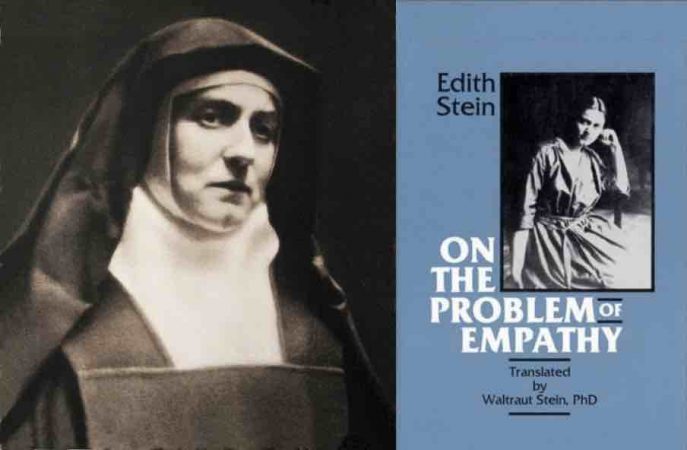
Edith Stein (1891-1942), a brilliant philosopher and spiritual writer, was a German Jewish convert to Roman Catholicism who would go on to become a nun of the Carmelite Order before she was executed by the Nazi government at Auschwitz in 1942. Considered a modern-day martyr by Catholics, she was canonized as a martyr and a saint by Pope John Paul II in 1998.
Born into a practicing Jewish family, a teenaged Stein rejected her faith because she could not find intellectually rigorous reasons for believing in God. Still, her search for truth never waned, leading to a desire to study with the acclaimed German philosopher Edmund Husserl, the founder of phenomenology. She eventually pursued a doctorate under Husserl, completing her dissertation, entitled “On the Problem of Empathy,” under his guidance. The First World War interrupted her studies, and her concern about the suffering caused by the war prompted her to volunteer at an infectious diseases hospital, where she served as a nurse for the Red Cross.
She converted to Catholicism in 1922, shortly after reading the autobiography of the sixteenth-century Spanish mystic Teresa of Ávila, a reformer and theologian known for her writings on contemplative life. Although she desired to follow Saint Teresa’s footsteps and dedicate her life to spiritual contemplation, her Catholic mentors dissuaded her, and she continued to teach, lecture, write, and translate, soon earning public recognition as a formidable philosopher and writer in her own right.
She translated Thomas Aquinas’ De Veritate (Of Truth) into German as she learned Roman Catholic philosophy as part of a quest to bridge phenomenology and Thomism. After she was forced to resign a post at a Catholic school due to the Nazi government’s requirement, in 1933, of an “Aryan certificate” for civil servants, she authored a letter asking Pope Pius XI to publicly denounce the Nazis. “We all who are faithful children of the Church, and who see the conditions in Germany with open eyes,” she wrote, “fear the worst for the prestige of the Church, if the silence continues any longer.”
Shortly thereafter, she entered monastic life, moving to Cologne later in 1933 to live in the Discalced Carmelite monastery. She became a nun, taking the name Teresa Benedicta of the Cross after her spiritual mentor. Five years later, she moved with her sister, also a convert to Christianity, to a Carmelite monastery in the Netherlands for safety. She resided there until the Nazi invasion of the Netherlands in August of 1942, when both she and her sister were taken to the Auschwitz concentration camp, where they died in a gas chamber on August 9, 1942.
Copyright © 2020 Emir-Stein Center. All rights reserved. | Privacy Policy